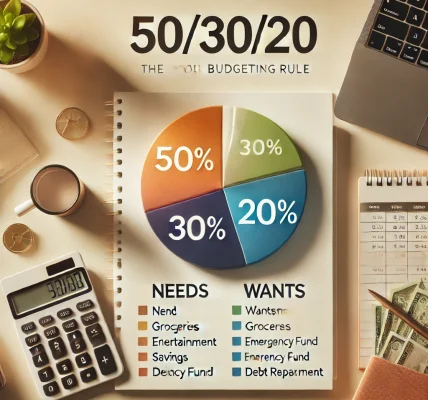Investing is a powerful way to grow your wealth and secure your financial future. For first-time investors, the excitement of starting this journey often comes with questions and uncertainties. One of the most critical aspects of successful investing is effective budgeting. Without a solid budgeting strategy, it can be challenging to balance daily expenses while setting aside funds for investments. In this guide, we will explore smart budgeting strategies designed to help first-time investors navigate their financial journey with confidence.
1. Understand Your Financial Situation
Before diving into investments, the first step is to gain a clear understanding of your financial standing. This includes calculating your income, tracking expenses, and identifying areas where you can save. Here are a few steps to get started:
- Assess Your Income: Document all sources of income, including your salary, freelance work, side gigs, and passive income streams.
- Track Your Expenses: Identify fixed costs (rent, utilities, insurance) and variable expenses (entertainment, dining out, shopping).
- Analyze Your Debt: Understand any existing liabilities such as student loans, credit card debt, or mortgages.
2. Set Clear Financial Goals
Successful budgeting begins with defining your financial objectives. These goals provide direction and help you prioritize your spending and saving habits. Consider setting short-term, medium-term, and long-term investment goals:
- Short-term Goals (1-3 years): Building an emergency fund or saving for a vacation.
- Medium-term Goals (3-10 years): Purchasing a home or funding education.
- Long-term Goals (10+ years): Retirement planning and wealth accumulation.
3. Create a Dedicated Investment Budget
It is essential to allocate a specific portion of your income for investments. A common budgeting method for beginners is the 50/30/20 rule:
- 50% for Necessities: Essential expenses like housing, food, and utilities.
- 30% for Wants: Non-essential spending such as hobbies and leisure.
- 20% for Savings and Investments: Use this portion for building an emergency fund and investing in diversified assets.
Tip: Automate your investments by setting up recurring transfers to your investment account.
4. Build an Emergency Fund First
Before you start investing, prioritize creating an emergency fund. This fund acts as a financial safety net in case of unexpected expenses such as medical bills or job loss. Aim to save 3 to 6 months’ worth of living expenses in a liquid and easily accessible account, like a high-yield savings account.
5. Prioritize High-Interest Debt Repayment
If you have high-interest debt, such as credit card balances, focus on repaying them before making substantial investments. High-interest rates can erode your investment returns. Consider using strategies like the avalanche method (paying off the highest-interest debt first) or the snowball method (starting with the smallest debt for quick wins).
6. Start Small and Scale Gradually
As a first-time investor, you don’t need a large sum to begin. Many investment platforms allow you to start with as little as $10 or $50. Consider the following beginner-friendly investment options:
- Index Funds and ETFs: Low-cost, diversified funds that track market indices.
- Robo-Advisors: Automated platforms that build and manage a diversified portfolio.
- Dividend Stocks: Companies that pay regular dividends, providing passive income.
Starting small allows you to learn and gain confidence while minimizing risk.
7. Use Budgeting Tools and Apps
Leverage technology to track your budget and investment progress. Popular budgeting apps like Mint, YNAB (You Need a Budget), and Personal Capital can help you manage your finances efficiently. Features to look for include:
- Expense tracking
- Automated investment contributions
- Goal-setting and progress tracking
8. Regularly Review and Adjust Your Budget
Financial situations and market conditions change over time. Schedule regular check-ins to review your budget and investment strategy. Evaluate the following:
- Investment Performance: Are your investments meeting your expected returns?
- Spending Habits: Are there areas where you can cut costs and reallocate funds?
- New Goals: Have your financial goals evolved, requiring a strategy shift?
9. Educate Yourself Continuously
Investing is a continuous learning process. Stay informed by reading credible financial resources, attending webinars, and following market news. Consider starting with books like “The Intelligent Investor” by Benjamin Graham or “Rich Dad Poor Dad” by Robert Kiyosaki to build a strong foundation.
10. Seek Professional Advice if Needed
While self-directed investing is possible, working with a financial advisor can offer personalized guidance. A professional can help you craft a tailored investment plan, optimize your tax strategy, and navigate complex financial situations.
Final Thoughts
Smart budgeting is the cornerstone of successful investing. By understanding your financial situation, setting clear goals, and maintaining a disciplined approach, first-time investors can lay the groundwork for long-term financial success. Remember, the journey to financial growth is a marathon, not a sprint. Start small, stay consistent, and adjust your strategy as you learn and grow.
Investing involves risk, and past performance is not indicative of future results. Always conduct your research or consult a financial professional before making investment decisions.



